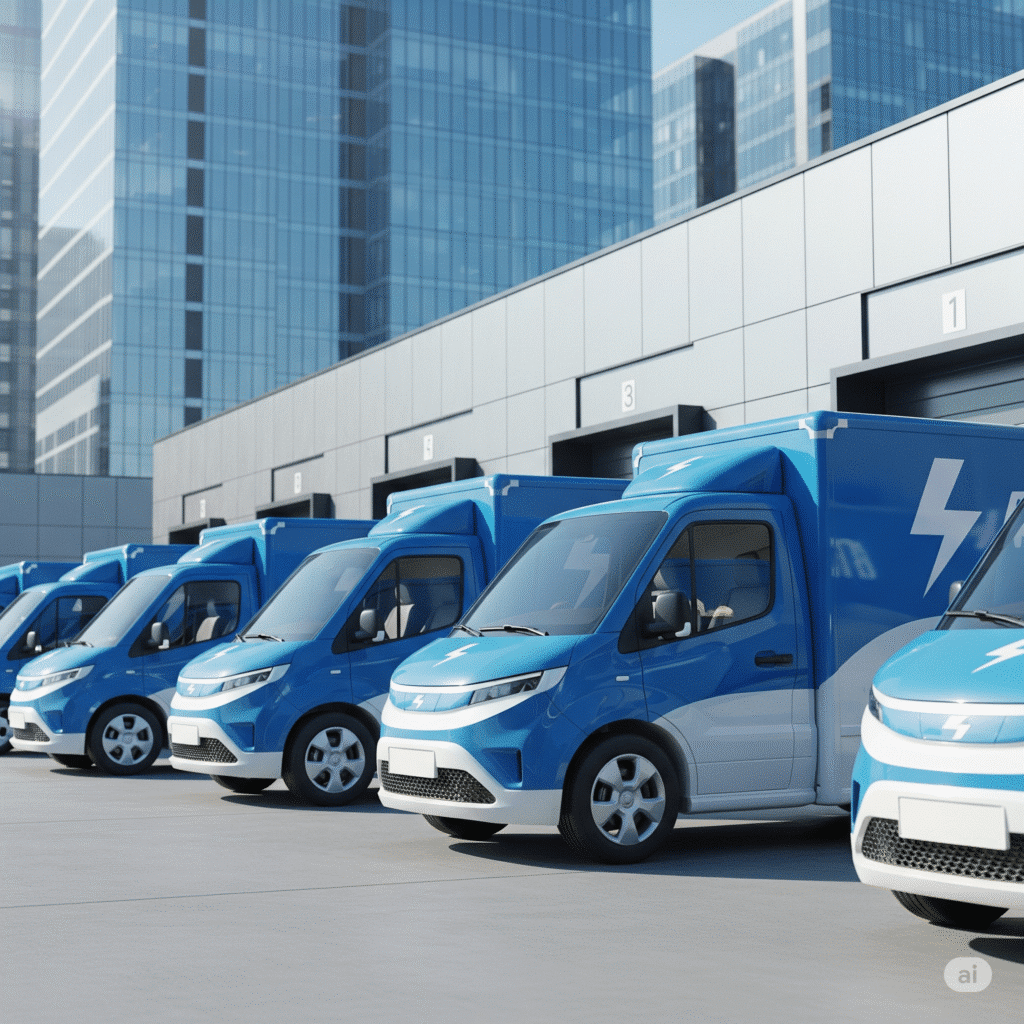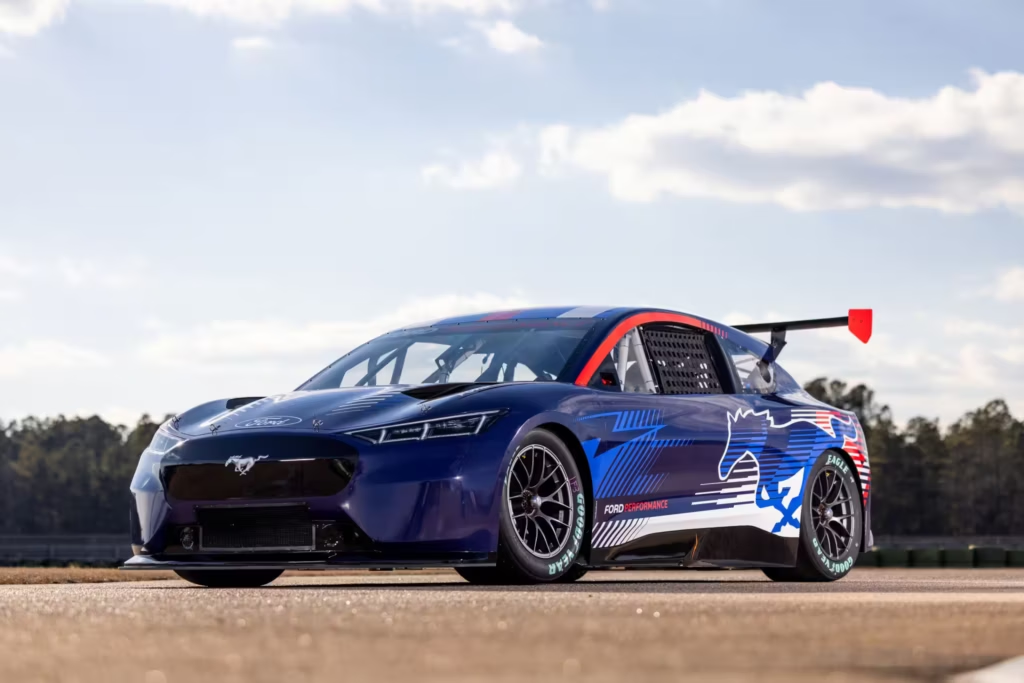Fleet Electrification Growing as Federal Policy Shifts
Even as federal policy around electric vehicles (EVs) in the U.S. becomes more uncertain, commercial fleet operators continue to move steadily toward electrification. The reasons are simple: electric vehicles outperform conventional gas-powered vehicles, in key areas like total cost of ownership, driver satisfaction, and emissions reduction. These core benefits haven’t changed, even as political winds shift — and forward-thinking companies aren’t waiting around, they are still going full-steam into fleet electrification.
The Business Case Is Too Strong to Ignore
In July 2024, Cox Automotive released a comprehensive survey of fleet operators across the U.S. Although only 14% of commercial fleets had incorporated EVs at the time, the research uncovered a high level of satisfaction among early adopters — and strong indications of future growth. Among those already using EVs, 90% said they were likely to acquire more.
Why such enthusiasm? The answer lies in the numbers. EVs consistently rate higher in overall satisfaction, cost efficiency, and vehicle performance. The initial sticker price may still be higher in many cases, but the long-term savings in fuel and maintenance are becoming too significant to pass up. In fact, JD Power’s research shows that the total cost of ownership for an EV often surpasses that of gas-powered vehicles within just five years — and sometimes even sooner.
This is particularly relevant for commercial fleet managers who operate on tight margins and are constantly calculating lifetime operating costs. Every dollar saved on maintenance, fuel, and vehicle downtime adds up quickly when multiplied across dozens or hundreds of vehicles.

Technology, Choice, and Momentum
What’s different today compared to just a few years ago is the breadth of options now available to fleet managers. “Companies see that battery technology is improving, and they’re looking at the total cost of ownership across different class segments,” says Michael Kodransky, Senior Director of Climate and Energy at nonprofit Ceres. “They are able to access more varieties of vehicles to meet their needs, including Class 8.”
“The No. 1 thing moving forward is the commitment by fleet owners and operators to decarbonize,” said Kodransky, who works with the Corporate Electric Vehicle Alliance (CEVA), a global fleet electrification initiative led by Ceres. “Companies are looking to address their Scope 1, 2 and 3 emissions,” he said, referring to greenhouse emissions produced by a company’s operations and value chain, “and they have made these commitments.”
That represents a major shift. Rivian and Orange EV are two companies that have stepped up to fill the fleet segment. Rivian’s custom-built electric delivery vans were initially developed exclusively for Amazon as part of a 2019 agreement. Now, Rivian is marketing those vans to other fleet operators — offering a viable solution for last-mile logistics across a wide array of industries. In April 2025, EVinfo.net reported that Rivian provided 70 of its commercial vans to Ryder, fleet vendor for HelloFresh, the world’s leading meal kit provider.
Orange EV, a Kansas-based company, has been manufacturing electric yard trucks since 2015. These vehicles are increasingly deployed in warehouses and logistics hubs, helping reduce emissions and noise pollution while improving operational efficiency. Companies like DHL and Ryder — both CEVA members — are among those taking advantage of these proven workhorses.

The Human Factor: Driver Satisfaction
In logistics and freight, the driver experience is not a minor consideration. With labor shortages still plaguing the trucking industry, companies are looking for ways to attract and retain skilled drivers. Fleet electrification is proving to be an unlikely ally in this effort.
States Logistics Services, another CEVA member, has emphasized how EVs benefit not just the bottom line, but employee morale. “This electric truck not only reduces emissions, but also offers a quieter ride and improved fuel efficiency compared to traditional diesel trucks,” the company says on its website. Employees appreciate the cleaner, more comfortable driving experience — especially in high-traffic or yard-based operations.
States Logistics is also using electric yard tractors to move freight at its facilities, creating an overall smoother and more sustainable work environment. These electric yard tractors, supplied by Orange EV, offer emissions-free operation in precisely the locations where diesel emissions would otherwise be most concentrated.
Charging Innovations Close the Loop
For fleet electrification to be truly scalable, charging infrastructure must keep pace. That’s why many CEVA members and others in the industry are now focusing on building out charging networks specifically tailored to fleet use cases.
Siemens, a CEVA member and longtime leader in electrification technologies, recently introduced Depot360 — a home charging reimbursement solution for fleets with drivers who take their vehicles home. This system ensures that drivers can reliably charge their vehicles overnight while enabling fleet managers to reimburse home energy use accurately, even in households with multiple EVs.
Another CEVA member, CBRE, is helping to bring EV charging infrastructure to underdeveloped property segments such as hotels, multi-family dwellings, and mixed-use commercial sites. These installations are critical not only for commercial fleets, but also for broader consumer adoption — helping normalize charging access as part of daily life.
Startups are also contributing to infrastructure innovation. California-based ElectricFish has developed 350Squared, which are transportable, battery-integrated charging stations that can connect to existing grid infrastructure. These units reduce the need for costly electrical upgrades and speed up charger deployment — especially useful in temporary or remote fleet settings.
Leading by Example: Visibility and Culture
Fleet electrification is also about visibility. Organizations that electrify their fleets and install EV infrastructure signal a broader cultural shift — one that aligns business operations with sustainability goals. One of the most symbolic examples comes from NASCAR, which installed 30 EV chargers at its Florida headquarters as part of its pledge to reach net-zero emissions for non-race operations by 2035. In January 2025, Ford Performance unveiled its latest groundbreaking creation: the Mustang Mach-E NASCAR Prototype.

Looking Ahead: Policy Uncertainty, Industry Resolve
Many in the industry remain optimistic, despite federal policy changes. Lisa Drake, Director of Fleet Electrification at Merchants Fleet — another CEVA member — says the trend is too well-established to reverse. “Innovation always comes with twists and turns, and the journey of fleet electrification is no exception,” she notes. “But fleet electrification remains a crucial component of a clean energy future.”
Even in a more challenging policy environment, the market fundamentals continue to drive progress. Battery costs are falling. Vehicle variety is growing. Infrastructure is expanding. And the long-term financial and environmental benefits remain clear.
For fleet managers weighing their options, the message is simple: the road to electrification may have its bumps for now, but the destination is more certain than ever over the long term.
Lynkwell’s Innovative EV Charging Solutions for Fleets
Lynkwell delivers a comprehensive, ROI-driven approach to fleet electrification—starting with full project evaluation, including incentive identification and infrastructure planning, and continuing through post-installation support for operational efficiency. With a hardware-agnostic strategy, Lynkwell offers a curated catalog featuring hundreds of AC and DC chargers and a proven track record of maintaining reliable, multi-OEM charging networks. Purpose-built software and managed services packages are designed specifically for fleet needs, providing unmatched visibility and control through industry-leading remote monitoring, advanced diagnostics, and automated alerts.
Lynkwell’s proprietary analytics tools support multifaceted monetization, allowing fleets to customize charging operations while maximizing returns. With validated interoperability and a robust test platform trusted by top global OEMs, every charger meets the highest standards of performance. Lynkwell also enables seamless integration with renewable energy sources, making it easy to power fleets sustainably. At the heart of its offering is Lynkwell X‑Change—a powerful ecosystem that connects fleets to an expansive network of OEMs, utilities, clean energy partners, and innovative technologies. This single-source platform simplifies energy management for all stakeholders and ensures scalable, future-ready solutions.
If you are considering fleet electrification, contact Lynkwell. Highly recommended by EVinfo.net.

Electric Vehicle Marketing Consultant, Writer and Editor. Publisher EVinfo.net.
Services